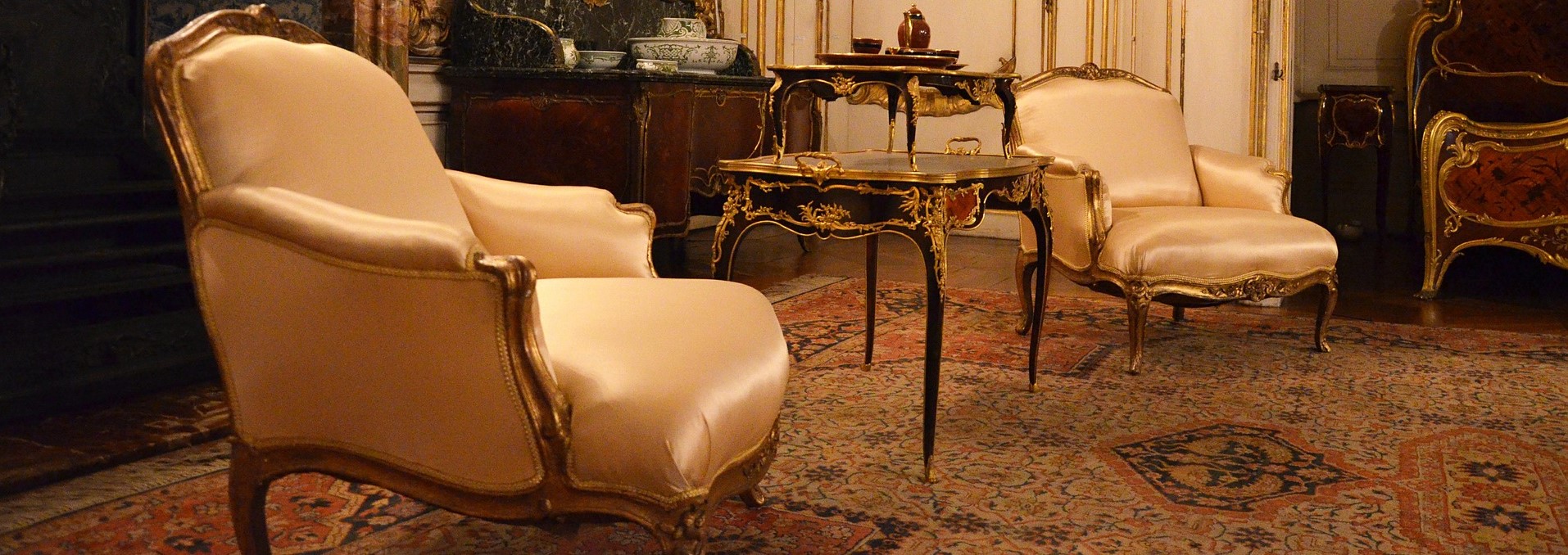Our catalogues
The Baroque style was born in the seventeenth-century Roman papal courts and then spread throughout Italy. Given the political fragmentation of Italy at the time, numerous variations of this style developed, which led to the creation of period furniture . The term derives from the Spanish barrueco or Portuguese barroco phoneme and literally means shapeless pearl. Already around the middle of the eighteenth century in France it was synonymous with unequal, irregular, bizarre, while in Italy the diction was of medieval memory and indicated a figure of the syllogism, an abstraction of thought. We wanted to identify this historical period with the pejorative term of baroque, recognizing in it extravagance and contrast with the criteria of harmony and expressive rigor to which it was intended to return under the influence of Greco-Roman art and the Italian Renaissance. Baroque , secentista and secentismo were synonyms of bad taste. As far as furniture is concerned, freedom of ideas, the need for pomp and virtuosity originated a synergy destined to produce unsurpassed masterpieces.

Baroque style furniture
Baroque style furniture differs from the previous style as they decided to abandon the rigidity of the academy and introduce curved and sinuous lines. The wood most used for the production of Baroque furniture is ebony. Walnut and cheaper woods are also used which, however, are gilded. In most cases the antique furniture is enriched with marble and hard stone inlays. The chairs become much more comfortable thanks to the padding of the backs and seats . The tables have a marble top supported by carved and gilded elements. The chests of drawers acquire a trapezoidal shape and are enriched with ivory decorations, lacquering and gilding. The beds are canopied with slightly high carved feet. The materials deployed for the Baroque furnishings were worthy of competing with Marco Polo's most amazing tales: lapis lazuli, malachite, amber, ivory, tortoiseshell, gold, silver, steel, precious wooden essences and more dressed the period furnishings which, due to their shape and imagination virtually gave life to the thousand and one nights of many powerful locals.
Typical of the period were supporting or accessory parts resolved with spiral column motifs, clearly inspired by Bernini's canopy of St. Peter's, parts with rich sculptural carving in high relief and even in the round within a vortex of volutes, scrolls and scrolls, curved and broken profiles , finials agitated by tympanums of articulated shape, aprons adorned with ornaments, corbels, buttresses and anything else to enliven shapes and structures. The Baroque is also the century of illusionism: thin lacquers and tempera colors crowd furniture and furnishings to imitate the effects of marble veining or games of precious briar veining with the marbling.
If you are looking for luxurious and prestigious furniture , Baroque furniture is perfect for you! We have been operating in the antiques sector for over 20 years and for this reason we will be able to satisfy your every need in the best possible way. Our experts will be able to advise you in the best way on how to create your own Baroque style furniture to make every room in your home unique and inimitable. Click here and discover our pieces!
To find out more about this style, we offer you in-depth articles written by our industry experts:
- Between Baroque and Baroque.
- The Baroque over the years.
- Between Baroque and Renaissance .
- The Austrian taste of the Baroque.
- Two eras for a chandelier with a unique taste.
- The novelties of the Neo-Baroque












